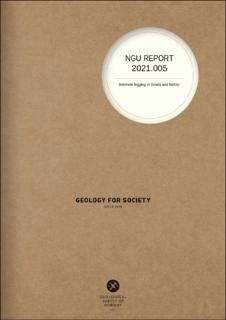| dc.description.abstract | AS a part of the Base 2 project NGU has performed geophysical borehole logging in four boreholes at Smøla, Møre and Romsdal county and three at Bømlo, Vestland county. The purpose of the drilling and logging was to study onshore deep weathered basement rocks. Such rocks can be a potential oil reservoir offshore, on the continental shelf.
The logged parameters were resistivity, porosity, seismic velocity, water conductivity, total gamma radiation, spectral gamma, magnetic susceptibility, Induced Polarisation, and Self Potential. All boreholes were logged using acoustic and optical televiewer. Flow measurements and pumping were performed. Lugeon test were done by the drilling company.
The results show heavily fractured rock in all boreholes. Especially in Bh4 at Smøla the resistivity was very low. Combined with low p-wave velocity and fracturing it can be interpreted as weathered and altered rock. IP anomalies may indicate clay.
The Lugeon tests showed quite low values and correlates well with the fracture frequency. From the Lugeon numbers the hydraulic conductivity and permeability are calculated. Calculated apparent porosity from the resistivity log, using Archi's law, is in the same range as laboratory porosity measurements on cores performed by NTNU. Most of the porosity values are in the range of 1 – 4 %.
Flow measurements showed no vertical flow in the boreholes and no in/out flow from fractures. Pumping indicated very low water capacity in all wells except Bh3, Bømlo. Near surface water just below the casing flowed into the borehole.
Bh2 at Bømlo was stuck at 27 m depth. Reopening of the borehole failed, and masses (sand, clay) flowed into the borehole and blocked it. | |

